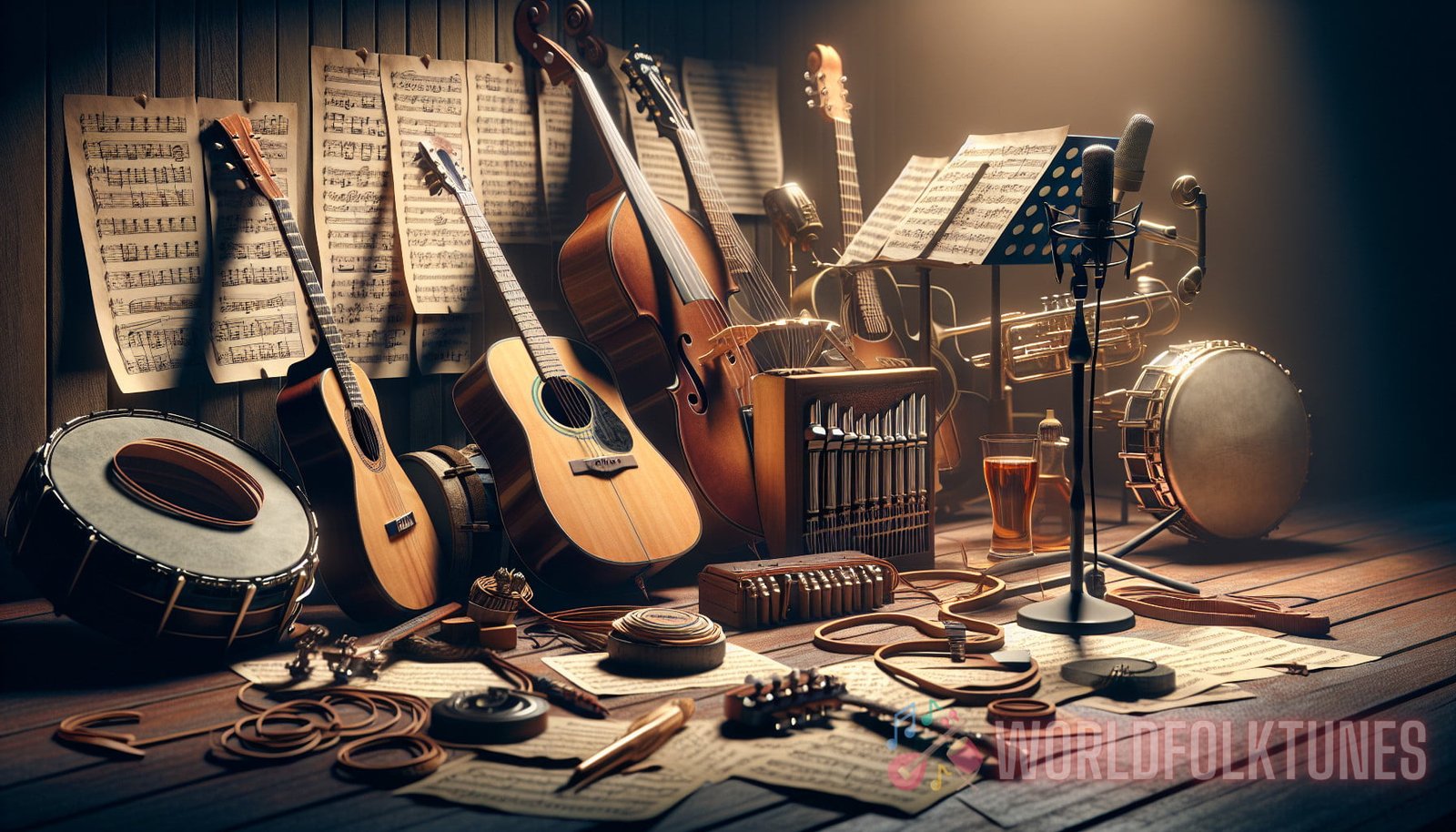Elevating Folk Melodies: A Profound Exploration of Melodic Structures and Harmonic Patterns in Heartfelt Live Performances
When it comes to live music performances, few genres can evoke the depth of emotion and sense of connection that folk music does. Folk melodies have a unique ability to transport listeners to another time and place, telling stories of love, loss, and the human experience. In this live performance review, we will delve into the intricate melodic structures and harmonic patterns that elevate folk music to a profound and captivating art form.
The Essence of Folk Music
Folk music has been deeply intertwined with human culture for centuries, serving as a way for people to express their joys, sorrows, and struggles. Originating from traditional and indigenous communities, folk music embodies the essence of a culture, carrying within it the stories, traditions, and beliefs of a people.
At the heart of folk music lies its melodies. These melodies are often deeply emotive, evoking a wide range of feelings within the listener. From the joyous and upbeat to the melancholic and reflective, folk melodies cover the entire spectrum of human emotions.
One of the captivating elements of folk melodies is their simplicity. Unlike more complex musical compositions, folk melodies are often built on a few simple and repetitive phrases, making them easy to sing along to and creating an immediate connection between the performer and the audience. This accessibility contributes to the enduring popularity of folk music across generations and cultural boundaries.
Exploring Melodic Structures in Folk Music
Within the realm of folk music, there is immense diversity in melodic structures. Each culture and region has its unique melodic language, reflecting its particular history and cultural context. From the haunting pentatonic melodies of Celtic folk music to the lively, syncopated rhythms of African folk melodies, the world of folk music is a treasure trove of melodic diversity.
One fascinating aspect of folk melodies is their use of modal scales. Unlike major and minor scales commonly found in Western classical music, modal scales provide a distinct flavor to folk melodies. Modes such as Dorian, Mixolydian, and Phrygian add complexity and richness to the melodies, transporting the listener to different musical landscapes.
While the melodies may vary, there are common melodic traits that can be found in many folk songs. These include stepwise motion, repetition of melodic motifs, and the use of ornamentation. Stepwise motion, where each note is adjacent to the previous one, creates a flowing and natural feel to the melody. Repetition of melodic motifs creates a sense of familiarity and allows the listener to connect with the recurring themes and ideas within the song. Ornamentation, such as trills, slides, and grace notes, adds flourishes and embellishments to the melodies, adding depth and complexity.
For an in-depth analysis of melodic crossroads in folk music, check out our article here.
The Harmonic Palette of Folk Music
While melody takes center stage in folk music, the harmonic accompaniment plays a crucial role in enhancing the emotive power of the performance. Harmonic patterns in folk music are often simple yet effective, providing a solid foundation for the melody to shine.

One common harmonic feature in folk music is the use of drones. Drones are sustained notes or chords that create a constant harmonic background for the melody to interact with. Traditionally, drones were created using instruments like the bagpipes or the sitar, but modern folk musicians often use techniques such as open tunings or pedal tones to achieve the same effect.
The harmonies in folk music are often modal, mirroring the modal scales used in the melody. This modal harmony adds a sense of authenticity and cultural context to the music, further immersing the listener in the world of the song.
Another harmonic technique found in folk music is the use of folk chords. Folk chords are typically open and spacious, avoiding complex and dissonant voicings. These chords allow the melody to take center stage while providing a warm and inviting harmonic backdrop.
For a comprehensive exploration of harmonic patterns in folk music, read our article here.
The Magic of Live Folk Performances
While folk melodies and harmonies are captivating in their own right, the magic truly comes alive in live performances. Live folk performances have a raw and intimate quality that cannot be replicated in recorded music. The natural imperfections and nuances in a live performance add an element of vulnerability and authenticity that resonates deeply with the audience.
A live folk performance is a shared experience between the performer and the audience. The performer feeds off the energy and reactions of the crowd, allowing the music to take unexpected turns and evolve in real-time. This improvisational aspect of live performances adds an element of surprise and spontaneity, making each performance a unique and unforgettable experience.
Folk music is often associated with storytelling, and live performances amplify the storytelling aspect of the music. Through their words and music, folk performers can transport the audience to different times and places, spinning tales of love, loss, and triumph. The combination of heartfelt lyrics and captivating melodies creates a powerful narrative that engages and moves the listener.
In Conclusion
Folk music, with its profound melodies and harmonic patterns, transcends cultural boundaries and speaks to the core of the human experience. The simple yet deeply emotive melodies, accompanied by modal harmonies, create a captivating musical tapestry that elevates the genre to a profound art form.
Live folk performances, with their raw and intimate quality, add an extra layer of depth and authenticity to the music. The unique connection between the performer and the audience, the improvisational nature of the performance, and the power of storytelling all contribute to the magic of live folk performances.
Whether you are a seasoned folk music enthusiast or new to the genre, immersing yourself in the world of live folk performances is a journey well worth taking. So find a local folk music venue or festival, and let the heartfelt melodies and storytelling whisk you away.
For more information on folk music, you can visit Wikipedia’s page on Folk Music.


